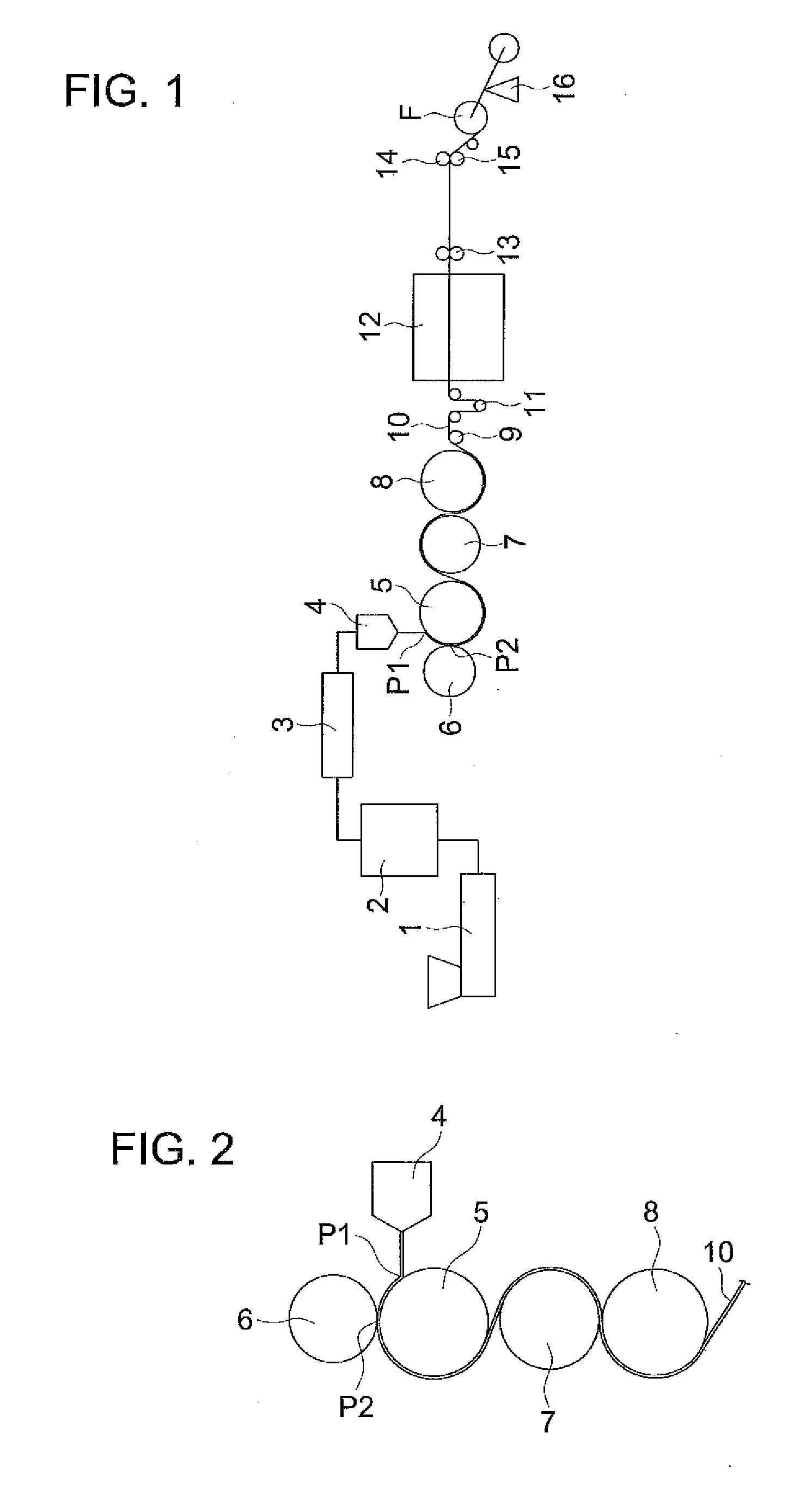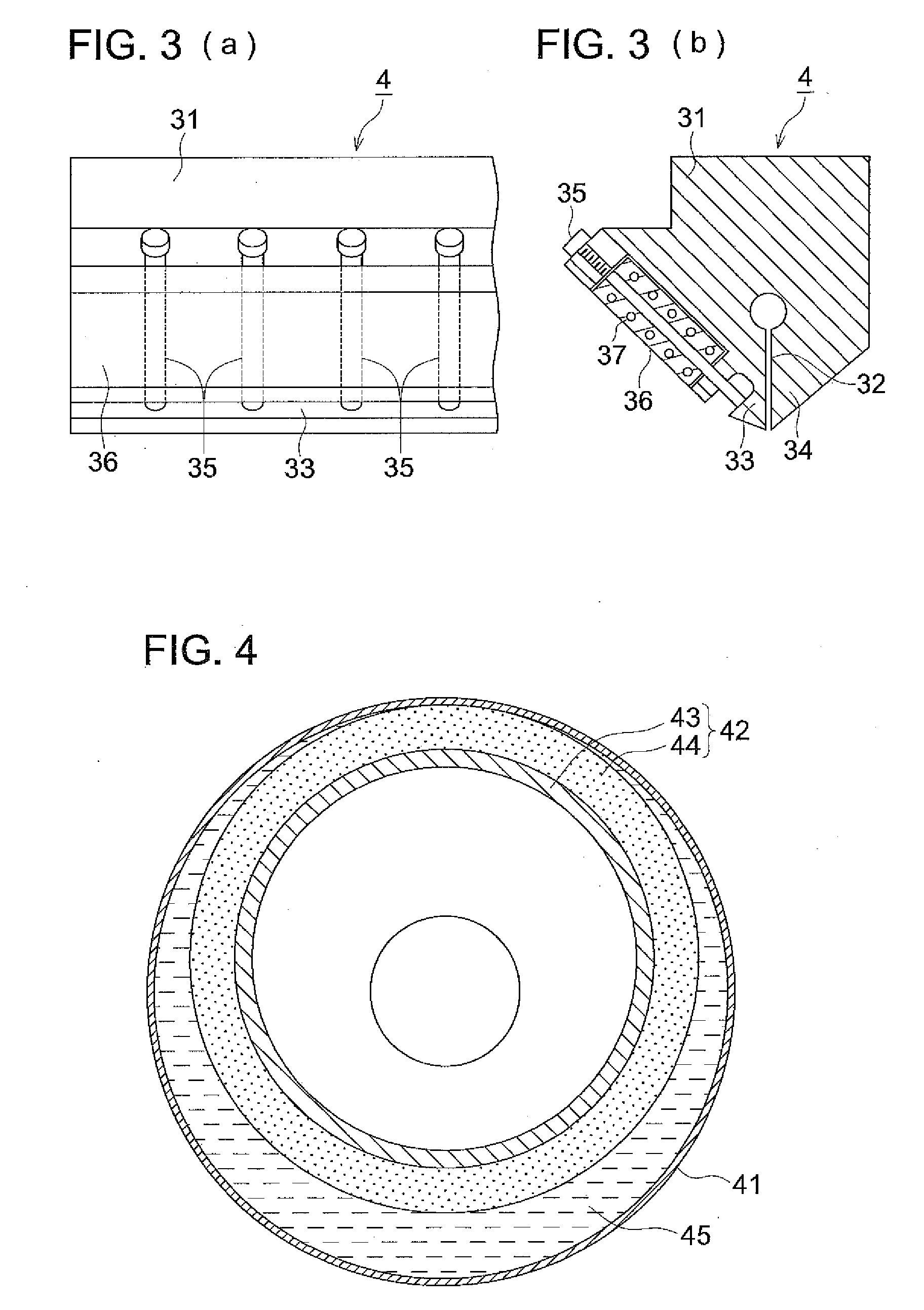Polarizing plate protective film and method for manufacturing the same, polarizing plate and method for manufacturing the same, and liquid crystal display device
a technology of protective film and polarizing plate, which is applied in the direction of polarising elements, paper/cardboard containers, instruments, etc., can solve the problems of high environment load, high environmental load, and difficulty in increasing the production of cellulose ester film using the solution-casting method
- Summary
- Abstract
- Description
- Claims
- Application Information
AI Technical Summary
Benefits of technology
Problems solved by technology
Method used
Image
Examples
synthesis example 1
Cellulose Ester C-1
[0281]Synthesis was carried out based on Example B described in Japanese Translation of PCT International Application No. 6-501040.
[0282]Solutions A-E as described below were prepared.
[0283]A: Propionic acid:concentrated sulfuric acid=5:3 (mass ratio)
[0284]B: Acetic acid:purified water=3:1 (mass ratio)
[0285]C: Acetic acid:purified water=1:1 (mass ratio)
[0286]D: Acetic acid:purified water magnesium carbonate=12:11:1 (mass ratio)
[0287]E: Solution prepared by dissolving 0.5 mol of potassium carbonate and 1.0 mol of citric acid in 14.6 kg of purified water
[0288]In a reaction container fitted with a mechanical stirrer, 100 parts by mass of cellulose purified from cotton, 317 parts by mass of acetic acid, and 67 parts by mass of propionic acid were added, followed by being stirred at 55° C. for 30 minutes. The temperature of the reaction container was decreased to 30° C. and 2.3 parts by mass of solution A was added, followed by being stirred for 30 minutes. The tempera...
synthesis example 2
Cellulose Ester C-2
[0297]Seventy grams of acetic acid (corresponding to aliphatic acid I), 20 g of propionic acid (corresponding to aliphatic acid IT) were added to 30 g of cellulose (dissolved pulp produced by Nippon Paper Group, Inc.), followed by being stirred at 54° C. for 30 minutes. The resulting mixture was cooled, and then 8 g of acetic anhydride (corresponding to aliphatic acid anhydride I), 125 g of propionic anhydride (corresponding to aliphatic acid anhydride II), and 1.2 g of sulfuric acid, having been cooled in an ice bath, were added for esterification. Esterification was carried out by stirring for 150 minutes while the temperature was controlled at most 40° C. After reaction, a liquid mixture of 30 g of acetic acid and 10 g of water was dripped over 20 minutes to hydrolyze excessive anhydrides. While the temperature of the reaction liquid was kept at 40° C., 90 g of acetic acid and 30 g of water were added to stir for 1 hour. The resulting mixture was poured into an...
synthesis examples 37
Cellulose Esters C-3-C-7
[0298]Using acetic acid, acetic anhydride, propionic acid, propionic anhydride, butyric acid, and butyric anhydride listed in Table 1, cellulose esters C-3-C-7 were obtained in the same manner as in Synthesis Example 2.
TABLE 1Acyl Group SubstitutionAliphaticAliphatic AcidTotal CarbonCelluloseDegreeAcidAnhydrideNumber ofEster No.AcPrBuIIIIIIAcyl GroupMwC-32.450.43—872051506.19211000C-40.651.73—10100101006.49201000C-52.20—0.63872043626.92198000C-61.651.27—902081257.11238000C-71.451.43—704081257.19241000Acyl group substitution degreeAc: acetyl groupPr: propionyl groupBu: butyryl groupAliphatic acidI: acetic acidII: propionic acid or butyric acidAliphatic acid anhydrideI: acetic anhydrideII: propionic anhydride or n-butyric acidMw Weight average molecular weight
PUM
| Property | Measurement | Unit |
|---|---|---|
| carbon number | aaaaa | aaaaa |
| carbon number | aaaaa | aaaaa |
| carbon number | aaaaa | aaaaa |
Abstract
Description
Claims
Application Information
 Login to View More
Login to View More - R&D
- Intellectual Property
- Life Sciences
- Materials
- Tech Scout
- Unparalleled Data Quality
- Higher Quality Content
- 60% Fewer Hallucinations
Browse by: Latest US Patents, China's latest patents, Technical Efficacy Thesaurus, Application Domain, Technology Topic, Popular Technical Reports.
© 2025 PatSnap. All rights reserved.Legal|Privacy policy|Modern Slavery Act Transparency Statement|Sitemap|About US| Contact US: help@patsnap.com



